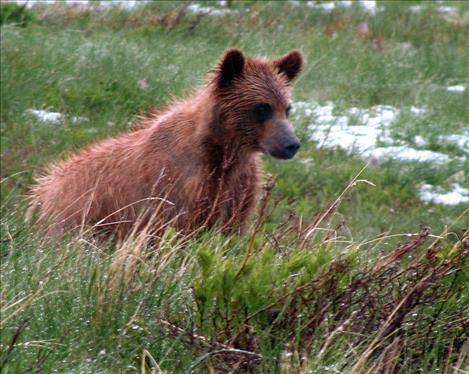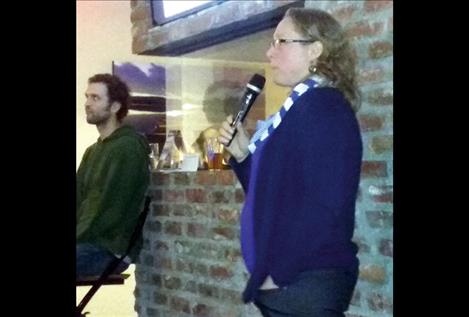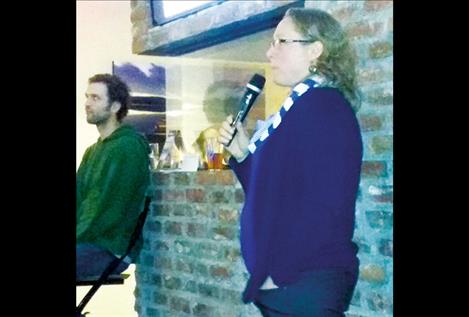Grizzly population doing well in Northwest Montana
Hey savvy news reader! Thanks for choosing local.
You are now reading
1 of 3 free articles.
BIGFORK – The growth of grizzly bears in northwest Montana was the topic of conversation during the December “Science on Tap” event at the Flathead Lake Brewing Co.
Two employees of the U.S. Geological Survey talked to some 30 or so persons about a grizzly bear family tree they have documented in three studies since 1998. The studies use bear hair taken from a bear hair trap or poles and trees that the bears rub their backs on.
Using the bear DNA, the scientists have been able to identify some 1,115 bears, including 595 females and 520 males.
“For the 1,115 bears used in the analysis, we detected them a total of 6,160 times at a total of 3,644 different locations,” Graves said.
The bears have been identified primarily in the Glacier, Whitefish, Mission and Swan ranges.
The laughs of the night came when Nate Mikle, a USGS biologist, talked about Bluto, a male grizzly who was first documented on the southeast side of the Mission Range.
Bluto has fathered 17 cubs by seven different females. Another interesting tidbit was that three of the female bears that Bluto mated with are relatives: grandmother, mother and daughter. In total, Bluto has 61 descendants, Mikle said.
Bluto and Sappho had six cubs together and these cubs scattered throughout the Swan Range. Bluto’s “grandcubs” have gone far a field. One left bear hair at a sampling site in the Rattlesnake area north of Missoula while another left traces in the Lincoln area. Others were found to have been in the Whitefish Range and Glacier National Park.
The Glacier National Park Conservancy and the U.S. Forest Service have been the main financial backers of the studies, said USGS research ecologist Tabitha Graves.
Other entities that are studying the results include: Montana Fish, Wildlife and Parks, the Montana Department of Natural Resources, the U.S. Fish and Wildlife Service, Glacier National Park, the Confederated Salish and Kootenai Tribes and the Blackfeet Tribe.
The grizzly bear population in northwest Montana is apparently doing well, and Graves noted that the U.S. Fish and Wildlife Service will make the decision on whether the bears will be delisted as a threatened species.
The science points to all of the criteria for grizzly bear recovery being met, she said, referring to a recovery plan that began in 1993.
The U.S. Fish and Wildlife Service is aware of the grizzly bear population growth in Northwest Montana, but right now it is focusing on the Greater Yellowstone region, Graves said. The federal agency announced in March that it is considering delisting grizzlies in that region from the Endangered Species Act, which listed them as threatened with extinction in 1975.
There have been three studies completed so far in Northwest Montana, Graves said. The first ran from 1998-2000 and focused on the Greater Glacier area. The next two were done in 2004 and from 2009-2012 and included the “Northern Divide” area, including most of Northwest Montana.
The initial goals of the study were to determine population size and distribution, said Graves, who has been working with grizzly bears for 15 years.
The Mission and Swan ranges had lower diversity than Glacier Park initially, but bear diversity increased rapidly in those areas between 2004-12, according to Graves.
“That’s what you would want to see if a population is recovering, which is what we think is happening,” Graves said. Graves and Mikle operate out of a U.S. Geological Service office in West Glacier.



















